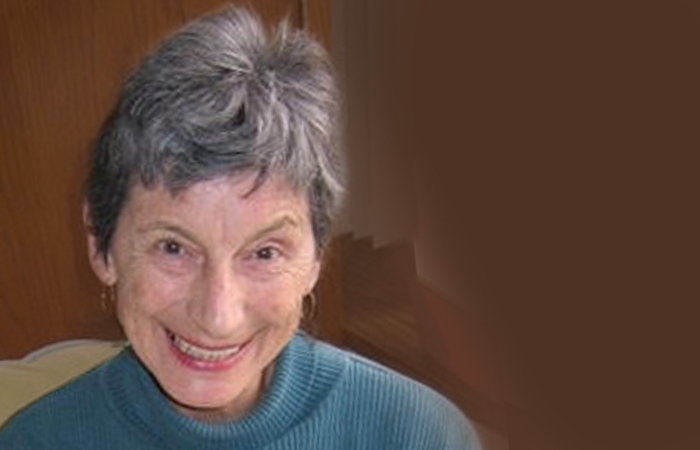Radix Institute
Our Roots In VisionOur Roots In Vision
Written by Erica Kelley
Introduction
The very first group of five Radix students participated in an experimental class with Chuck and Erica Kelley in 1969 called “Education in Vision and Feeling.” This was a unique synthesis of two systems of bodywork: natural vision improvement methods derived from William H. Bates, and emotional release techniques derived from Wilhelm Reich. As Bates was the pioneer in freeing the senses, Reich was the pioneer in freeing feelings. Chuck brought a long background of research and experience as an experimental psychologist specializing in vision, and was a certified instructor of the Bates Method. Bates had identified stress and muscular tension around the eyes as a significant cause of visual dysfunction and had devised a variety of techniques, developed further by Chuck’s teacher, Margaret D. Corbett, to bring relaxed tone to those muscles, thus affecting the shape of the eye for better vision. This concept correlated naturally with Wilhelm Reich’s discoveries about “muscular armor.” Reich described the “ocular” segment as the first of seven segments in the body, each of which encompassed specific patterns of muscular armor. Kelley saw it was important to release ocular armor in his students so that they could see and be seen as their work progressed.
Exploring Vision
These students were primarily near-sighted (myopic). They came hoping to improve their poor vision and were intrigued by the notion of working with the emotional causes underlying it. After twelve weeks there was indeed significant improvement in their vision, but what gave everyone greater pause – teachers and students alike — were the general improvements in the students’ character, functioning, relationships and their overall sense of aliveness. These factors were more important to the students than their improved vision! (Kelley, New Techniques of Vision Improvement)
Vision as the Starting Point
Other ocular techniques include voluntary movements of the eye muscles in coordination with the breath and pulsation of the life force through the body, such as closing tight and opening wide, following a flashlight in random movements, visual contact with others using phrases such as “Look at me” or “I don’t understand.” Other exercises leading to involuntary movement and expression of feeling often combine thinking with feeling, such as when the student remembers “not being seen” as a teenager or “having to watch out” as a child. The ability to visualize plays an important role. Having imagination means having the capacity to see images; visual scenes and guided imagery have always played their part in Radix ocular work. Early “trips of the imagination” were designed specifically to enhance vision, perhaps by seeing grains of sand in one’s hand then following a seagull down the beach and away over the ocean to the horizon. They were usually designed, too, to enhance as many senses as possible – touching that sand, hearing the waves, and so on.
Clarify Vision Concepts
It is apparent, then, that the functions of the ocular segment are not only seeing and sensing the environment. Blind people still have most of the functions of this first segment working for them, functions such as perceiving, thinking, fantasizing, imaging, imagining, understanding, conceptualizing, visualizing, looking ahead, and foresight. It is not surprising that, as Chuck developed his program of Self-Direction and Purpose along with Feeling, “vision” remained an integral part of the work.
As surgical technology makes it increasingly easy to correct the mechanical aspects of seeing, it will be interesting to assess the impact such corrections have on psychological and emotional functioning. Does the sudden ability to see without glasses impact emotional behavior? Do “new eyes” bring a spontaneous flow of radix to the ocular segment, and improve functioning beyond limited sensory behavior? Perhaps a Radix teacher will study such changes and offer observations in the future.
References
Corbett, M.D., 1949, Help Yourself to Better Sight. New York: Prentice-Hall.
Huxley, A, 1942, The Art of Seeing. New York: Harper.
Kelley, C.R., 1971, 1980-81, Segment One Program, a Pre-training Radix course (unpublished).
__________, 1974, 1970, Education in Feeling and Purpose. Vancouver, WA: K/R Publications.
__________, New Techniques of Vision Improvement. Vancouver, WA: K/R Publications.
Reich, W., 1961, Character Analysis. New York: Farrar, Straus & Cudahy.
Websites
www.visionsofjoy.org
www.VisionEducators.org
www.eyerobics.net (Jerriann Taber Ph.D.)
Our Reichian Roots

Our Reichian Roots
“It’s very simple,” he had said and yet, by pointing “a bunch of pipes” at the sky, generations of established scientific beliefs about the weather were crumbling before his humble but knowledgeable student’s eyes.
Now imagine Reich giving a session of Orgone Therapy. Unlike his teacher, Freud, he is sitting beside and in reach of the patient, rather than out of sight above the couch. He is looking into the patient’s eyes, noticing if they look away from him as significant material emerges. He observes the breathing – is it slowing down, or is it racing? He notices the tone of voice, the agitation or stillness of the body as the patient recounts emotional events. He notices when tears break through, or when they are blocked from expression. When his patient is silent, the body expresses the truth. The fists may clench, eyes open wide, breath stop. He is identifying specific tensions, and he is more interested in the process than he is in the content. He is becoming the first body-oriented psychologist. The scene will sound very familiar to clients and practitioners of Radix growth work.
Recognizing Freud's influence
Fast-forward forty years from the last scene. Imagine Charles (Chuck) Kelley giving a Radix bodywork session. He is kneeling beside a mat on which lies a man who is stiff, blocked and remote. Chuck suggests to him a sequence of voluntary exercises – with the breath, arm and legs movements, sounds — that help him to contact his blocked feelings and to soften his barriers to their expression. During their thirty minutes together, the feelings develop, intensify, and overflow in a strong involuntary expression of anger, fear, crying, or pleasurable emotion – whatever is there. Afterwards there is relief and relaxation and, beyond that, a greater acceptance of his own feelings.
Alternatively, picture Chuck standing in a lake in the Berkshires of Massachusetts wearing swimming trunks and cotton gloves. He is holding a movable assemblage of hollow parallel metal tubes, a Reichian cloudbuster, that he directs, as if he is pointing a large telescope. He points it first to one section of sky, then another, lingering longer here, more briefly there. After a few minutes he swings up and stays several minutes on a carefully chosen setting near the zenith. While he works, the sky changes, the wind shifts, a new pattern of clouds begins to form. A different weather process has developed. He puts the equipment away. – In two days there is unpredicted large-scale rain in the whole region.
Chuck Kelley's realization
Thus the foundation of Kelley-Radix was laid by two of Wilhelm Reich’s major discoveries: the existence of the life force in the body and in all of nature, and the muscular armor, the patterns of chronic tension in the body that block the flow of the life force and hence the expression of feeling and the full sexual experience.
Reich’s legacy lives on in a multitude of disciplines in the mind/body arena, now in the second and third generations since his death in 1957. Radix was blessed with the first-generation experience of its Founder, Charles Kelley, just as Bioenergetics was founded by a first-generation student of Reich’s, Alexander Lowen, and Gestalt Therapy by Fritz Perls. The Human Potential Movement of the 1970’s produced pioneers and disciplines that moved from classic “medical/psychiatric-model” orientation to mainstream “growth” models, and made the work of Reich, among others, accessible to countless numbers of people who were not “sick” but wanted to deeply change and enrich their lives. Kelley has written extensively about why he dissociated from Reich’s medical model with its focus on “sickness” and “cure,” just as he has explained his separation from Orgonomy, which freed him to develop Radix Education’s concepts and programs.
Reich’s untimely death
References
DeMeo, James, 1998, SAHARASIA: The Revolutionary Discovery of a Geographic Basis to Human Behavior. Greensprings, OR. www.orgonelab.org.
Kelley, Charles R., 1991, Personal Growth and Psychotherapy in Radix Work. Reprinted in THE RADIX 1992
_______________, 1977, Reich, Radix, and the Enhancement of Sexuality. Reprinted in THE RADIX 1992.
_______________, 1965, Orgonomy Since the Death of Reich, The Creative Process Vol. V.
_______________, 1963, The Life and Death of Wilhelm Reich, in The Creative Process, Vol. III No. 1.
Sharaf, Myron, 1983, FURY ON EARTH. New York: St. Martin’s Press/Marek.
Wilhelm Reich Infant Trust and the Wilhelm Reich Museum, P.O. Box 687, Rangeley, Maine. www.wilhelmreichmuseum.org.

